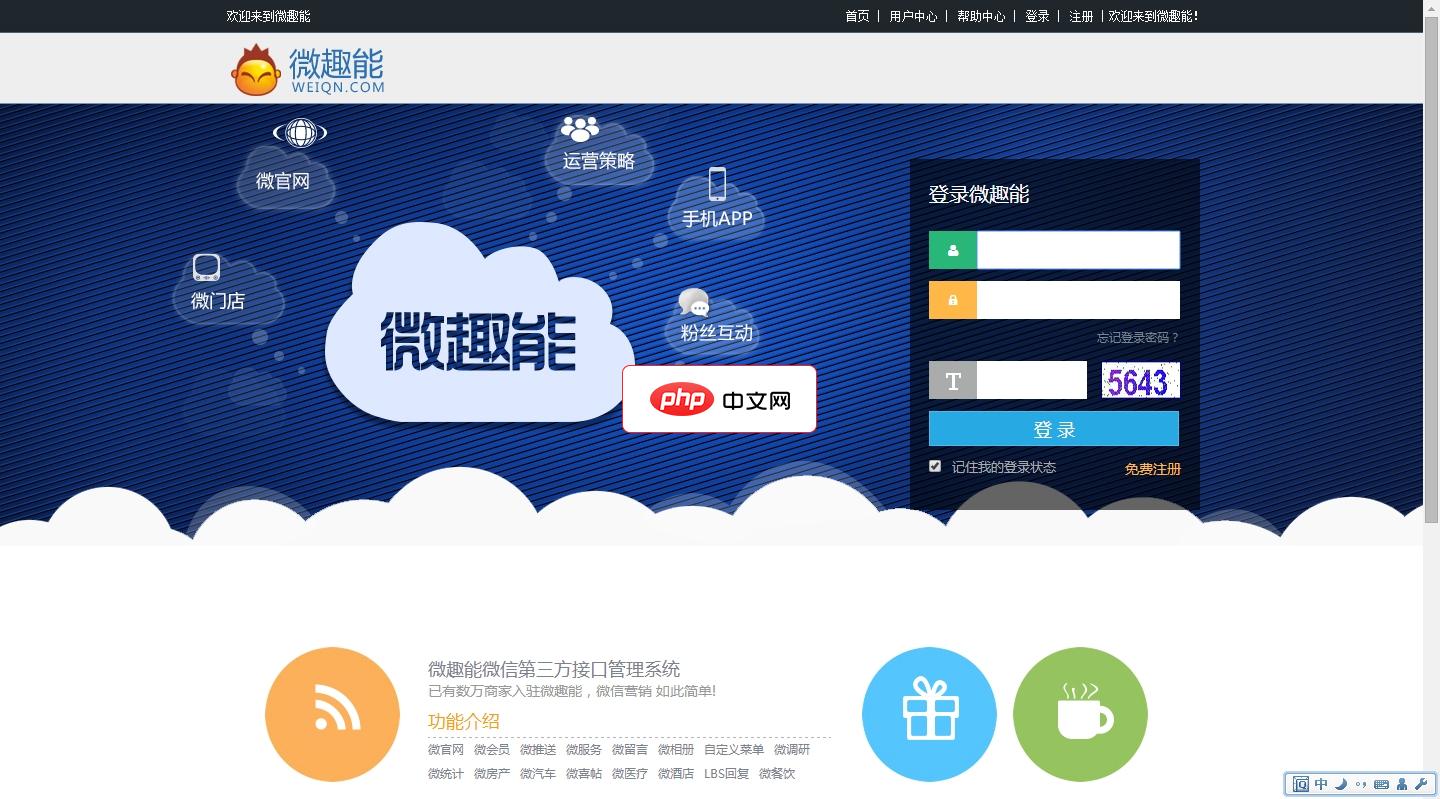
本文探讨了在Go语言中构建可扩展Web应用的两种主要策略。针对Go不支持动态库的特性,介绍了通过定义接口和注册机制实现编译时模块集成的方法,以及利用RPC和独立进程实现运行时动态组件管理的进阶方案,旨在帮助开发者根据项目需求选择合适的架构模式,构建灵活且易于维护的Go应用。
在Go语言中构建一个可扩展的Web应用程序,使其组件能够独立添加或移除而无需修改核心基础,是一个常见的架构需求。尽管Go语言目前不直接支持动态加载库,但我们可以通过精心设计的架构模式来实现类似的模块化和扩展性。以下将介绍两种主要的实现策略:编译时模块集成和运行时动态组件管理。
这种方法的核心思想是定义一套标准接口,所有模块(组件)都必须实现这些接口。主应用程序通过一个注册机制来发现并管理这些模块。当需要添加或移除模块时,虽然需要重新编译整个应用程序,但模块间的耦合度较低,易于维护。
首先,我们需要一个核心包(例如 yourapp/core),它包含主应用程序的逻辑和模块必须遵循的接口。
立即学习“go语言免费学习笔记(深入)”;
// yourapp/core/application.go
package core
import (
"fmt"
"log"
"net/http"
"strings"
)
// Component 是所有可插拔模块必须实现的接口。
// 它定义了模块的基础URL路径和处理HTTP请求的方法。
type Component interface {
BaseUrl() string
ServeHTTP(w http.ResponseWriter, r *http.Request)
}
// Application 是主应用程序的类型,负责管理和路由请求到注册的组件。
type Application struct {
components map[string]Component // 存储已注册的组件,键为BaseUrl
mux *http.ServeMux // 用于内部路由
}
// NewApplication 创建并返回一个新的Application实例。
func NewApplication() *Application {
return &Application{
components: make(map[string]Component),
mux: http.NewServeMux(),
}
}
// Register 方法用于将组件注册到应用程序中。
// 如果BaseUrl冲突,则会发出警告。
func (app *Application) Register(comp Component) {
baseUrl := comp.BaseUrl()
if _, exists := app.components[baseUrl]; exists {
log.Printf("Warning: Component with BaseUrl '%s' already registered. Overwriting.", baseUrl)
}
app.components[baseUrl] = comp
// 为每个组件注册一个处理函数,将请求转发给组件自身的ServeHTTP方法
app.mux.Handle(baseUrl+"/", http.StripPrefix(baseUrl, comp))
log.Printf("Component '%s' registered at path '%s'", fmt.Sprintf("%T", comp), baseUrl)
}
// ServeHTTP 实现了http.Handler接口,作为主应用程序的入口点。
// 它根据请求路径将请求路由到相应的组件。
func (app *Application) ServeHTTP(w http.ResponseWriter, r *http.Request) {
// 尝试通过内置的ServeMux进行路由
app.mux.ServeHTTP(w, r)
}
// Run 启动应用程序的HTTP服务器。
func (app *Application) Run(addr string) {
log.Printf("Application listening on %s", addr)
log.Fatal(http.ListenAndServe(addr, app))
}每个模块(例如 yourapp/blog)都应该是一个独立的Go包,并实现 core.Component 接口。
// yourapp/blog/blog.go
package blog
import (
"fmt"
"net/http"
)
// Blog 是一个示例组件,代表一个博客模块。
type Blog struct {
Title string
// 其他博客相关的配置或数据
}
// BaseUrl 返回此组件的基础URL路径。
func (b Blog) BaseUrl() string {
return "/blog"
}
// ServeHTTP 处理针对/blog路径的请求。
func (b Blog) ServeHTTP(w http.ResponseWriter, r *http.Request) {
if r.URL.Path == "/" {
fmt.Fprintf(w, "Welcome to the %s Blog Home Page!", b.Title)
} else {
fmt.Fprintf(w, "You are viewing a blog post under %s: %s", b.Title, r.URL.Path)
}
}main.go 文件将负责初始化 Application 并注册所有需要的模块。
// main.go
package main
import (
"log"
"your_module_path/App/Modules/Blog" // 替换为你的实际模块路径
"your_module_path/App/Modules/Core" // 替换为你的实际核心路径
)
func main() {
app := core.NewApplication()
// 注册博客模块
app.Register(blog.Blog{
Title: "我的个人博客",
})
// 注册其他模块...
// app.Register(another_module.AnotherModule{})
log.Println("All components registered.")
app.Run(":8080")
}优点:
缺点:
为了实现真正的运行时动态性,我们可以将每个组件作为独立的进程运行,并通过远程过程调用(RPC)或HTTP API进行通信。主应用程序充当一个网关或代理,将外部请求转发给相应的组件进程。

产品介绍微趣能 Weiqn 开源免费的微信公共账号接口系统。MVC框架框架结构清晰、易维护、模块化、扩展性好,性能稳定强大核心-梦有多大核心就有多大,轻松应对各种场景!微趣能系统 以关键字应答为中心 与内容素材库 文本 如图片 语音 视频和应用各类信息整体汇集并且与第三方应用完美结合,强大的前后台管理;人性化的界面设计。开放API接口-灵活多动的API,万名开发者召集中。Weiqn 系统开发者AP
 1
1

每个组件不再是应用程序内的一个Go包,而是一个独立的Go服务,有自己的 main 函数,可以独立部署和运行。这些服务可以暴露RPC接口或RESTful API。
例如,一个博客组件可以是一个独立的HTTP服务:
// blog_service/main.go
package main
import (
"fmt"
"log"
"net/http"
)
func main() {
http.HandleFunc("/blog/", func(w http.ResponseWriter, r *http.Request) {
path := r.URL.Path[len("/blog/"):]
if path == "" {
fmt.Fprintf(w, "Welcome to the Blog Service Home Page!")
} else {
fmt.Fprintf(w, "You are viewing a blog post from the Blog Service: %s", path)
}
})
log.Println("Blog Service listening on :8081")
log.Fatal(http.ListenAndServe(":8081", nil))
}主应用程序不再直接包含组件逻辑,而是作为请求的入口点,根据请求路径将请求转发到相应的组件服务。Go标准库中的 net/http/httputil 包提供了 NewSingleHostReverseProxy 函数,非常适合此场景。
// main.go (使用反向代理)
package main
import (
"log"
"net/http"
"net/http/httputil"
"net/url"
)
func main() {
// 注册组件服务及其对应的代理目标
// 实际应用中,这些映射关系可能从配置文件或服务发现中获取
componentProxies := map[string]*httputil.ReverseProxy{
"/blog/": httputil.NewSingleHostReverseProxy(&url.URL{
Scheme: "http",
Host: "localhost:8081", // 博客服务运行的地址
}),
// "/users/": httputil.NewSingleHostReverseProxy(&url.URL{
// Scheme: "http",
// Host: "localhost:8082", // 用户服务运行的地址
// }),
}
http.HandleFunc("/", func(w http.ResponseWriter, r *http.Request) {
for prefix, proxy := range componentProxies {
if strings.HasPrefix(r.URL.Path, prefix) {
log.Printf("Routing request for %s to %s", r.URL.Path, proxy.Director)
proxy.ServeHTTP(w, r)
return
}
}
// 如果没有匹配的组件,返回404
http.NotFound(w, r)
})
log.Println("Main Application (Gateway) listening on :8080")
log.Fatal(http.ListenAndServe(":8080", nil))
}除了HTTP反向代理,组件之间或主应用与组件之间也可以通过 net/rpc 包定义RPC接口进行更结构化的通信,例如用于注册、注销组件,或者获取全局配置等。
// component_rpc/api.go (示例RPC接口定义)
package component_rpc
type ComponentService interface {
RegisterComponent(args *RegisterArgs, reply *RegisterReply) error
UnregisterComponent(args *UnregisterArgs, reply *UnregisterReply) error
GetGlobalConfig(args *ConfigArgs, reply *ConfigReply) error
}
type RegisterArgs struct {
ComponentName string
BaseUrl string
Endpoint string // 组件的服务地址
}
type RegisterReply struct {
Success bool
Message string
}
// ... 其他RPC方法和结构优点:
缺点:
选择哪种策略取决于项目的具体需求和规模:
在实践中,您甚至可以结合两种方法:核心功能采用编译时集成,而某些特定、需要高度动态性的模块则作为独立服务运行。无论选择哪种方案,清晰的接口定义和模块化设计都是构建可扩展Go应用的关键。
以上就是Go语言可扩展应用模块化架构设计与实现的详细内容,更多请关注php中文网其它相关文章!

每个人都需要一台速度更快、更稳定的 PC。随着时间的推移,垃圾文件、旧注册表数据和不必要的后台进程会占用资源并降低性能。幸运的是,许多工具可以让 Windows 保持平稳运行。

Copyright 2014-2025 https://www.php.cn/ All Rights Reserved | php.cn | 湘ICP备2023035733号